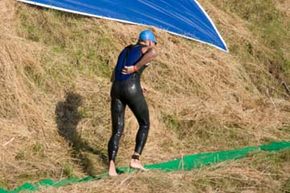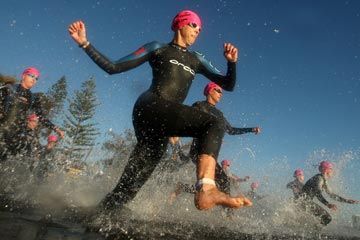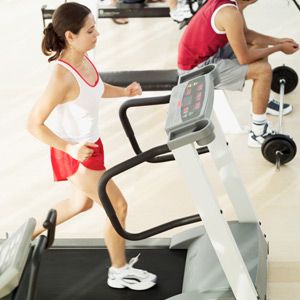If someone were to ask you what a triathlon was, most of us would describe the three sports -- swimming, cycling and running -- that make up the traditional triathlon and almost always occur in that order. And this would be correct, as far as it goes. But you'll rarely see triathletes biking with their swimming caps on, and, for that matter, they wouldn't win many competitions trying to run with bicycle cleats, either.
Each triathlon has a special place called a transition area (and there is almost always only one such zone) where participants change gear and clothing and do anything else they might need to do before moving on to the next stage. Now, you might think this would be a good time to catch your breath, pop a candy bar or wax eloquent about your favorite electrolyte with the other athletes. If you're doing the triathlon for fun or to just see if you can finish, then knock yourself out. In fact, first-time triathletes should be more concerned with getting familiar with the whole scene.
Advertisement
But if you're in it to win, the transition can easily make or break you -- and the clock keeps on ticking. Moving between events in the most efficient way possible means you won't have to make up that time on the bike or during the run, conserving energy for when you really need it. According to statistics from the International Triathlon Union, the average time difference between the top two male triathletes in the first five events of 2010 was a narrow 6.6 seconds. For women, it was only 3.2 seconds. If you think for a moment about how long it takes to take a drink, put on some socks or eat a granola bar, you can begin to appreciate just how important the transition can be.
Top triathletes can complete the first transition (swim-cycle) in less than a minute, and the second changeover (cycle-run) in less than 30 seconds [source: International Triathlon Union]. For less competitive triathlons, good transitions average around 2 minutes and 45 seconds, respectively.
In this article, we're going to look at each transition individually, exploring ways to shave away crucial seconds. Some will help you save time; others will help you avoid getting kicked out of the race altogether. Next, let's look at what you need to do as you get out of the water.
Advertisement















